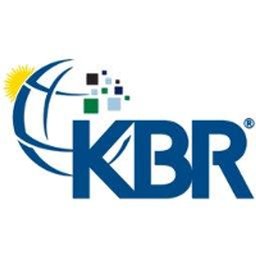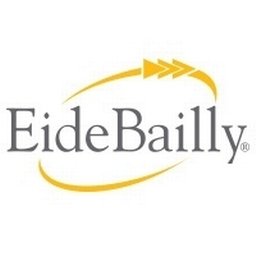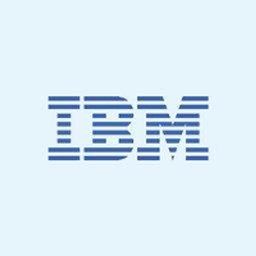Job Opportunities in India
October 17, 2024
Edwards India Private Ltd
SQL Administrator (On-Contract)
SQL Administrator (On-Contract)
Functional area: Information Technology
Country: India
City: Maharastra
Company name: Edwards India Private Ltd
Date of posting: Oct 16, 2024
Operations:
Assessment & Planning
Project Management and Technical Assistance
IT Security
Follow VTBA IT Policies
Maintains consistent interfaces with
Bright ideas come from all of us. The more unique perspectives we embrace, the more innovative we are. Together we build a culture where difference is valued and we share a deep sense of purpose and belonging.
- SQL services and databases installation and configuration: installing and configuring new SQL services on our central SQL clusters or Azure SQL managed Instances.
- Migrate SQL databases after Business alignment to Azure SQL Managed instances
- Document migration process and coordinate actions with the VTIS Business Application team and / or VTIS Server Cloud team
- Database maintenance and support: must ensure that the SQL databases and services are up to date and are functioning properly
- Security and compliance: ensuring that the SQL databases meet security and compliance standards
- Data Quality: Ensure that the CMDB documentation is up to date for all VTBA SQL databases
- Ensure that SQL database projects stay on track.
- Co-ordinate with vendor and the business to install / fix an database issue
- Maintain high availability and performance of SQL databases
- Ensure the security of SQL database by implementing best practices and adhering to organizational security policies.
- Coordinate database updates and security issues with all parties and business
- Keep the VTBA SQL database on prem and cloud landscape modern and clean
- Consult and Support VTBA for new SQL databases
- Stay updated with new trends and technologies to continually improve the organization's software stack.
Assessment & Planning
- Inventory Database Assets: Identify all SQL databases that need to be migrated, including their size, dependencies, and configurations.
- Assess Compatibility: Check for compatibility between your current on-premise SQL system and the cloud provider’s database services.
- Migration Strategy: Define a migration strategy (e.g., rehosting, re-platforming, or refactoring). You can choose between a lift-and-shift (move as is) or modernization (optimizing for the cloud) approach.
- Data Governance: Evaluate compliance, security, and data residency regulations.
- Database Sizing and Capacity Planning: Estimate the required cloud infrastructure, considering performance and scaling needs.
- Plan and prepare Data migration from My SQL, Mongo DB and Oracle XE to Azure SQL Managed instance
- Schema & Data Cleanup: Optimize and clean up database schemas, removing unused objects, tables, and data.
- Backup and Recovery Plan: Establish a robust backup and recovery strategy before starting the migration.
- Provision Cloud Infrastructure: Set up your cloud environment, including database instances, storage, networking, and compute resources.
- Security Setup: Implement security best practices, such as encryption, access control (IAM roles), SSL/TLS for data in transit, and data encryption at rest.
- Data Transfer Options: Choose the best migration method:
- Online Migration: Migrate while the current system is live (minimizes downtime).
- Offline Migration: Migrate during a planned downtime window.
- Data Synchronization Tools: Use cloud migration tools (e.g., Migration Service, Azure Database Migration Service).
- Full Database Migration: Migrate the entire SQL database, including schema, indexes, stored procedures, and triggers.
- Incremental Data Migration: Perform delta migrations for any data changes during the migration indow.
- Schema & Object Conversion: Convert database objects, data types, and code (if necessary) to be compatible with the target cloud environment.
- Data Integrity Testing: Verify that all data has been migrated correctly and without corruption.
- Performance Testing: Ensure that the migrated database performs as expected in the cloud environment, conducting stress tests and load tests.
- Application Testing: Test all associated applications to ensure they work properly with the cloud database.
- Security Testing: Validate that access control and encryption settings are functioning correctly.
- Backup & Disaster Recovery Testing: Ensure backups are taken correctly and that disaster recovery procedures work in the cloud.
- Finalize Data Migration: Complete the final incremental data migration to ensure all changes during the migration process are captured.
- Switch Production Traffic: Redirect application traffic from the on-premise database to the cloud database.
- Monitor Operations: Closely monitor database performance and application behavior during the initial days of cloud operations.
- Decommission Legacy Systems: After ensuring everything is running smoothly, decommission the on-premise systems (if applicable).
- Performance Tuning: Continuously optimize the database for cloud performance (e.g., adjusting indexes, partitions, etc.).
- Scaling & Auto-scaling: Set up auto-scaling policies for your cloud resources to handle traffic fluctuations.
- Cost Management: Monitor and manage cloud costs, using tools provided by the cloud provider to optimize resource usage.
- Regular Backups & Patching: Set up automated backup policies and ensure regular updates or patching of the database services.
- Security Auditing: Regularly audit cloud security settings, including IAM roles and data encryption policies.
- Document the Migration Process: Maintain detailed documentation on the migration process, configurations, and challenges faced.
- Training: Train your team on managing the new cloud-based SQL environment, covering monitoring, scaling, security, and cost management.
Project Management and Technical Assistance
- Attend projects and realize new features
- Collaborate with project managers and business users
- Participate in data quality efforts and in architecture design
- Update on weekly base the progress report for VTBA infrastructure projects
- Define with the project lead how to measure project progress
- Attend project meetings and ensure that project progress is noted and reported
IT Security
Follow VTBA IT Policies
- Inform the IT security officer and Head of IT about security breaches
Maintains consistent interfaces with
- End users VTBA
- IT colleagues VTBA IT
- VT BA project teams
- VT BA Global IM Service Desk
- Group IT SAP team
- External service providers like Kyndryl and SAP
Bright ideas come from all of us. The more unique perspectives we embrace, the more innovative we are. Together we build a culture where difference is valued and we share a deep sense of purpose and belonging.
We regret to inform you that this job opportunity is no longer available
Latest Job Opportunities

October 19, 2024
Quincare Pharmaceuticals Private Limited
Medical Representative
Bankura
FULL TIME
View DetailsSimilar Jobs



September 10, 2024
S/C YOUTH ORGANIZATION
Business Administrator
Bokaro
FULL TIME & PART TIME
View Details